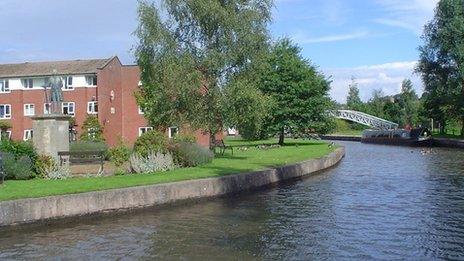In pictures: Changing face of Britain's canals
- Published
Britain's relationship with the canals of the Industrial Revolution has lasted for some 300 years. In that time they've moved from being vital trade routes to ignored and forgotten relics, but in the past few decades canals have enjoyed a resurgence. Now, in many cases, they're seen as great places to keep fit by, live near and take holidays on.
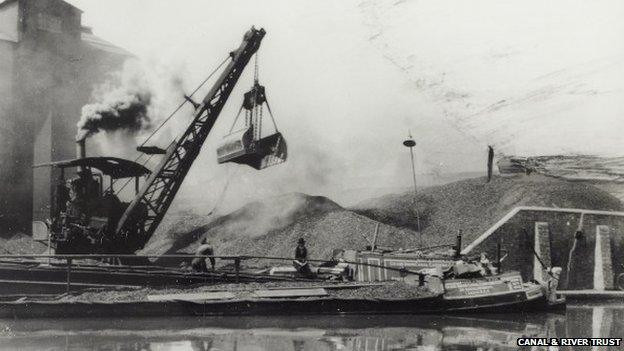
The first industrial canal, the Aire and Calder Navigation in West Yorkshire, was completed in about 1700 and canal-building boomed in the 18th Century. But the advent of the railways the following century started a long decline. The loading of boats on the Grand Union Canal, between London and Birmingham, was phased out in the 1930s.
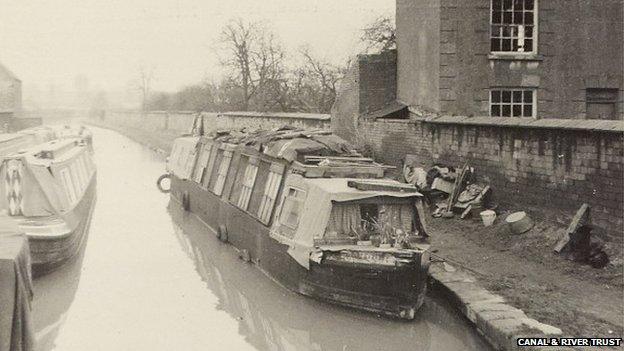
By the mid-1940s many miles of canals were neglected and some stretches filled in or silted up. In 1946 the Inland Waterways Association was formed and began lobbying the authorities to maintain canals. Today, there is an "amazing amount of original infrastructure that still operates as designed", Nigel Crowe from the Canal and River Trust said. He said that this heritage is hard to match anywhere else in the world.
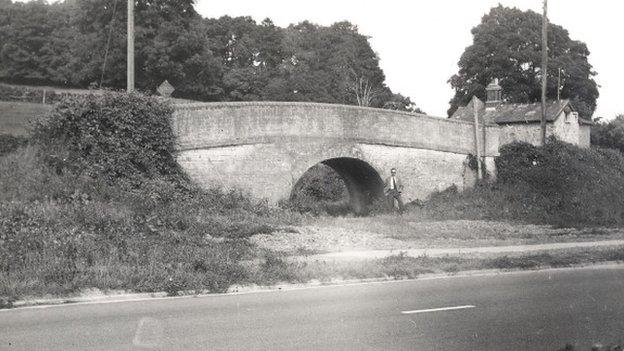
In the 1950s canals were viewed as relics of the past and roads were the future, as shown by this old canal bridge that passes over a filled-in canal, metres away from a newly laid road.
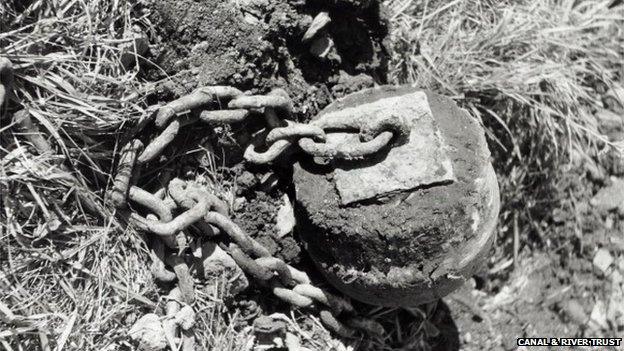
Just like your bath at home, many canals can be emptied by pulling the plug. This one from the Chirk Aqueduct on the Llangollen Canal, on the England-Wales Border, was photographed in 1954.
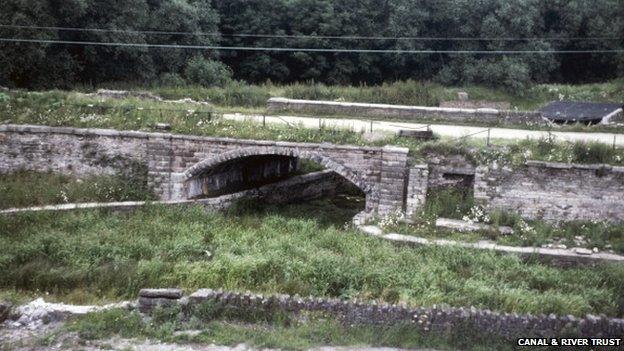
By 1980, like the Bugsworth Basin on the Peak Forest Canal, a lot of the network lay derelict. The entire canal system was built to suit horses, which pulled the boats attached by rope, with the curving bridge abutments preventing the ropes from snagging on the brickwork. But horse power was no match for steam trains and, later, petrol engines.
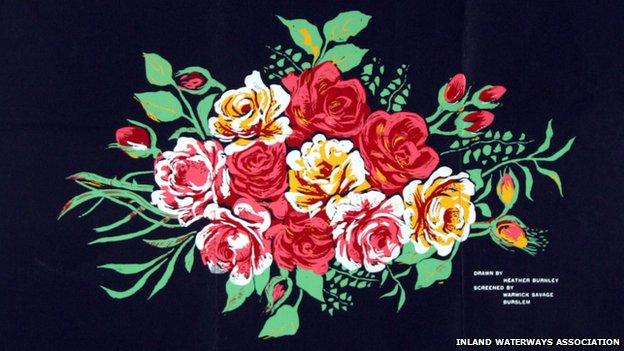
One of the regional canal boat art styles, "Knobstick Roses", originated in Cheshire and can be identified by its realistic style. Some of the most popular and "wonderfully elaborate" artwork was created in Victorian times. Boat painter David Kynaston told the new BBC documentary, Canals: The Making of a Nation, "it is sort of the icing on the cake".
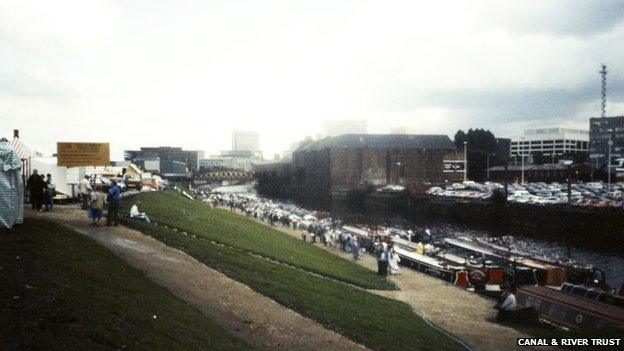
Narrowboat rallies, like this one in Manchester in 1989, are less common now. "In the early days they were very much for demonstrating to improve canals, now they are more for public awareness", said canal enthusiast Steve Wood. Many footpaths were not open to the public till the mid-20th Century, Mr Crowe said, but thanks in part to these campaigners canals are now accessible by all.
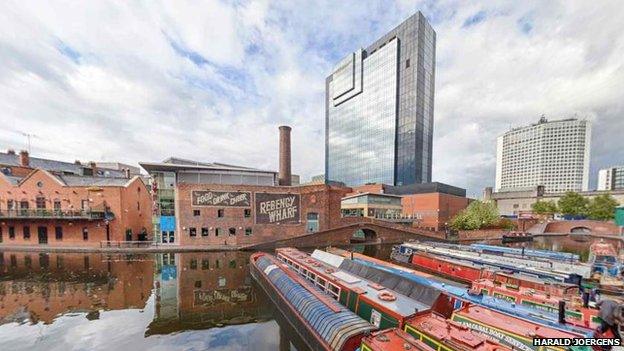
Birmingham is at the centre of Britain's canal network. Its past has informed the future, with an "interesting mix" of uses forming the 1990s restoration efforts, retired city planner Jim Quinn said. Business, leisure and housing are all based around Gas Street Basin in the city centre. This new attitude to urban canals can be seen across the country, from London to Coventry and Manchester.
Canals: The Making of a Nation is on BBC One at 19:30 BST on Friday
Related topics
- Published7 May 2015
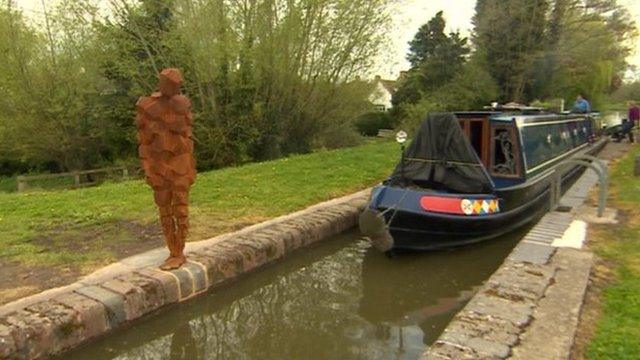
- Published15 February 2015
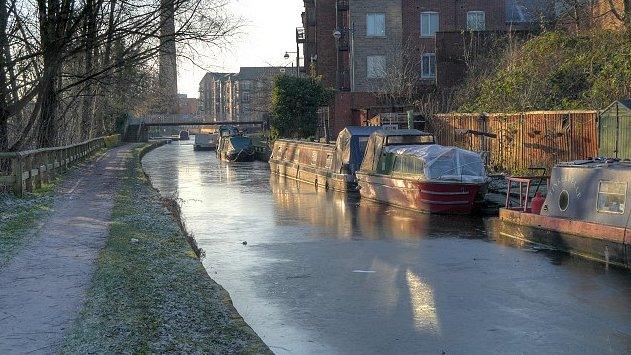
- Published23 July 2014
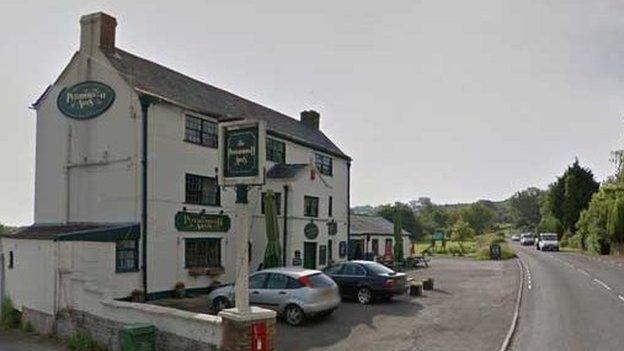
- Published22 May 2015
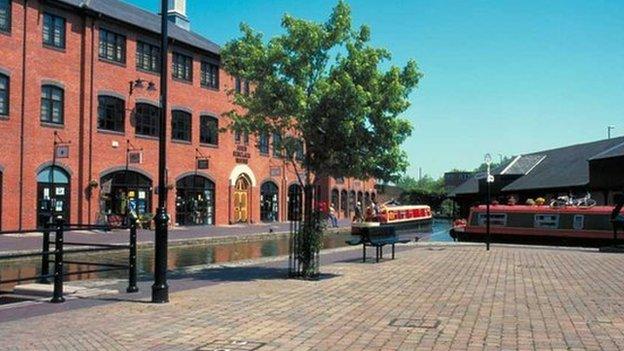
- Published6 January 2014
